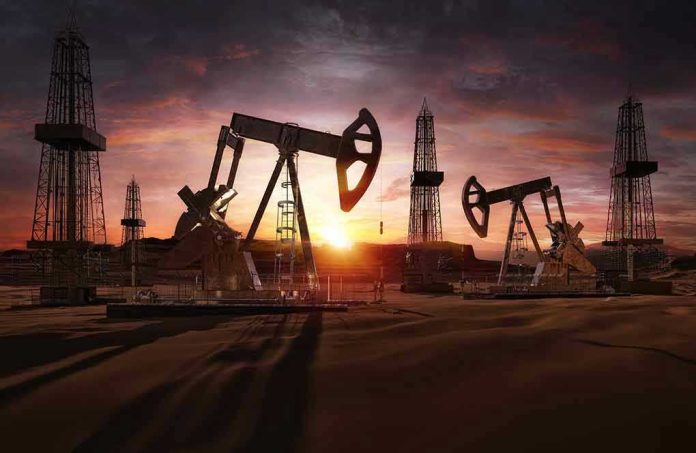
Millions of acres of pristine Arctic wilderness, once off-limits, are now back in the crosshairs of oil and gas drillers—raising urgent questions about what America values more: energy dominance or environmental legacy.
Story Snapshot
- Trump administration reopens Arctic lands for oil and gas drilling, reversing Biden-era protections.
- Decision reignites fierce public debate over environmental preservation versus economic growth.
- Potential impacts include changes to U.S. energy independence and risks to fragile Arctic ecosystems.
- Move highlights the ongoing political tug-of-war shaping America’s Arctic future.
Trump Administration Greenlights Arctic Drilling
The Trump administration has officially restored access to millions of acres in the Arctic for oil and gas development, a dramatic reversal of restrictions put in place during the Biden presidency. This new policy opens the door for energy companies to pursue drilling leases in territories that had been shielded from extractive industries, reigniting a decades-old debate. The move is being framed as a win for American energy independence, but critics argue it comes at the expense of irreplaceable natural resources.
This policy shift is not merely administrative housekeeping. It represents a deliberate recalibration of national priorities, tilting the scale from conservation to resource extraction. Supporters believe that unlocking Arctic reserves will bolster domestic energy supplies and reduce reliance on foreign oil markets. Detractors, however, see the decision as a direct threat to unique ecosystems and the indigenous communities that depend on them. The Arctic’s delicate balance—already under siege from climate change—now faces new pressures from potential industrial activity.
Economic Arguments Meet Environmental Concerns
Proponents of expanded drilling emphasize the promise of economic growth and job creation. They point to the potential for new revenues, infrastructure investments, and the strategic advantage of increased U.S. oil output. These arguments resonate with regions heavily reliant on the energy sector, which have long lobbied for greater access to federal lands. They contend that modern drilling technology can minimize environmental disruption and that strict regulation can balance extraction with stewardship.
Opponents counter with warnings about irreversible damage to Arctic habitats, including the risk of oil spills and disruption to migratory wildlife. Environmental groups argue that the short-term economic gains are not worth the long-term costs of degraded landscapes, altered water systems, and the loss of biodiversity. They also highlight the symbolic significance of Arctic wilderness as a barometer of America’s commitment to conservation in the face of mounting global environmental crises.
The Politics of Arctic Policy
This latest turn in Arctic policy underscores the volatility of federal land management, which has swung sharply with changes in the White House. Under President Biden, the Arctic saw robust protections and a clear emphasis on climate action. The Trump administration’s new directive undoes those efforts, signaling a return to policies seen during Trump’s first term. This whiplash effect raises concerns among both investors and conservationists, who now see the fate of the Arctic tied to electoral cycles rather than long-term planning.
For American conservatives, the decision is seen as a necessary correction—putting national interests, economic opportunity, and energy security first. The belief is that responsible development, guided by American ingenuity and regulatory oversight, can unlock resources without sacrificing core environmental values. For progressives, the move is a dangerous gamble with one of the planet’s last frontiers, driven by short-term thinking and political calculation.
What’s Next for the Arctic—and the Nation?
As new lease sales and exploratory operations loom, the future of the Arctic remains unsettled. Legal challenges and public protests are expected, as environmental groups prepare to fight the decision in court and in the court of public opinion. Meanwhile, energy firms must weigh the risks of investing in a region where policy can shift overnight. The national conversation about energy, environment, and identity continues, with the Arctic as its latest flashpoint.
The consequences of this decision will ripple outward—from remote tundra to global markets, from Native villages to the halls of Congress. Whether this marks a new era of Arctic prosperity or the beginning of an irreversible loss, only time and future administrations will tell. Americans now face a stark question: what price are we willing to pay for power, and who decides the fate of the wildest corners of our nation?
Sources:
Trump restores drilling on millions of Arctic acres blocked by Biden












